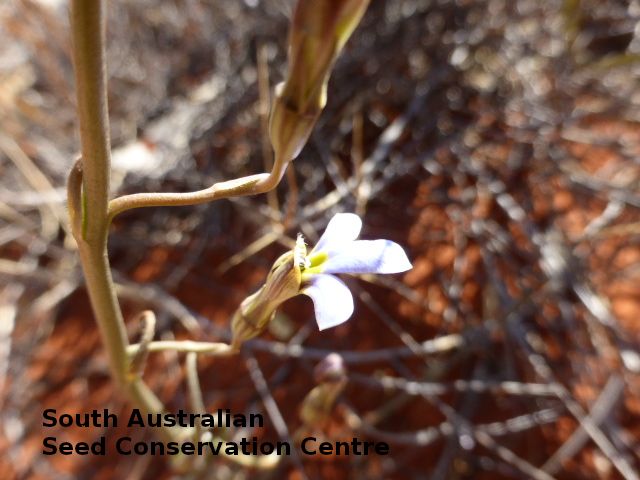










Prior names
Lobelia heterophylla
Common names
Wing-seeded Lobelia
Etymology
Lobelia, named after Mathias de Lobel (1538-1616), physician to William of Orange and then botanist to James I of England. Heterophylla, from the Greek 'heteros', meaning different and 'phyllon,' meaning leaf. Centralis, means central or in the middle, referring to the distribution of this subspecies, which is principally in central Australia.
Distribution and status
Found in the north and north-western parts of south Australia, growing inTriodia hummock grasslands and Allocasuarina decaisneana and Acacia spp. woodlands in sand dune country. Also found in Western Australia and Northern Territory. Native. Rare in South Australia. Uncommon in the other states. Maybe more common post fire.
Herbarium regions: North Western, Lake Eyre
AVH map: SA distribution map (external link)
Plant description
Erect or ascending glabrous herb, to 40 cm high. Leaves linear to narrowly elliptic, to 60 mm long and 7 mm wide; entire, or occasionally with 1–3 teeth. Flower-spike to 35 mm long (to 45 mm in fruit) with pale blue to purple flowers . Hypanthium to 6 mm long and 3.5 mm wide. Calyx-lobes to 5 mm long. Corolla to 20 mm long, tubular part of corolla to 12 mm long; central lobe to 7 mm long and 4 mm wide; lateral lobes to 7 mm long and 2.5 mm wide. Flowering and fruiting between September and November. Fruits are brown ovoid capsule to 13 mm long and 8 mm diameter. Seed embryo type is linear, under-developed.
Seed collection and propagation
Collect seeds between September and November. Collect mature capsules that are fat, turning a pale straw-colour and containing brown seeds. Can collect individual capsules or break off the whole fruit spike if most capsules are mature. Place the capsules in a tray and leave to dry for one week. Rub the capsules gently by hand to dislodge the seeds. Use a sieve to separate the unwanted material. Be careful as the seeds are very small. Store the seeds with a desiccant such as dried silica beads or dry rice, in an air tight container in a cool and dry place.